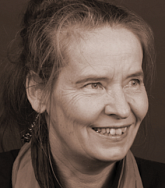At night, the University of Oregon is quiet. Too quiet.
When the students have retreated to the residence halls, and after even the most scholarly professors have left their offices, the remaining shell of a campus—now shrouded in darkness—plays host to the paranormal.
Or so they say.
What was that noise outside Villard Hall? Did you see those bushes rustle by Condon? Did that gargoyle above Willamette Hall just turn its head at me?
The UO campus, which is dotted with buildings built in the 19th century, has its fair share of ghost stories. While some of them are far-fetched, others have developed lives of their own among students and faculty members.
The following legends are drawn from the UO Randall V. Mills Archives of Northwest Folklore, a repository of fieldwork collections and research materials on folklife in Oregon, the Pacific Northwest, and beyond. University folklorists say they exemplify patterns rooted deep in various cultures—and mean more to us than simply a good scare.
A Monster at Mac Court?
McArthur Court was long home to the screaming and chanting of Ducks fans cheering on the basketball teams. But not everything heard in the venerable facility is so easily explained.
According to records in the folklore archives, a women’s basketball player helping staff in the basement once reported a “weird grunting sound.” Also, sounds like “40 mile-per-hour winds” swept through the area, yet she felt no breeze and was nowhere near an air duct or outside. The grunting persisted and the group promptly finished up, the woman reported, and “got out of there.”
What caused the noises? No one knows for sure, though it should be noted Mac Court is across the street from . . . Pioneer Cemetery.

“Areas that seem deserted or unused—those places always seem spooky to us,” says Martha Bayless, a professor of English and director of folklore and public culture. “It’s eerie to be at Mac Court and think how full of life and excitement it used to be, where now it’s silent and empty. And anything on the edge of a cemetery is going to seem spooky and haunted.”
Giving Life to Pioneer Cemetery
It’s no surprise that Pioneer Cemetery is the setting for many campus ghost stories.
Students have claimed the sounds of bagpipes echo from the cemetery on certain nights. Others have said they see women in white dresses wandering through the cemetery, cleaning gravestones and tending to spirits.
One remarkable story from the folklore archives stands out. A former student recalled a legend that at midnight every year on a certain date, the statues “wake up, walk around, talk to each other, hang out and stuff.” They even “help other people when they can,” the student said.
Apparently, statues, too, are entitled to social lives.

An Empty Room, a Cardboard Box, a Single Word: "Gail"
Years and years ago, according to a legend stored in the folklore archives, a group of curious students stumbled upon a door labeled “Archives” in the basement of an undisclosed university building.
Behind the door was a series of dusty hallways and closets littered with cobwebs. Some rooms had collections of blank keys or empty boxes. But in one room they found something unique: a small cardboard box with a wood handle across the top. Inscribed was one word: “Gail.” Along a wall of the room were footprints embedded in the dried cement.
The students learned that a girl named Gail had been killed there long ago, according to the legend, and one of them said “her ghost was haunting the archives.”
The “uncanny valley” of a person, Bayless says, is a vague sense of humanity emanating from an object like a doll or puppet that leaves us with a twinge of uncertainty. In the case of Gail, she adds, we may get the same feeling from what she may have left behind.
“Statues, dolls, and puppets tend to have stories attached to them, often scary stories, and almost inevitably stories in which the statues or dolls come to life when no one is looking, or at night, or both,” Bayless says. “They do creepy things, because those stories are mirroring our creepy feelings about the statues or dolls. The stories arise out of our emotional response to these things.
“And maybe there is even a box there labeled ‘Gail.’ But which came first, the box or the legend?”
Science and the Supernatural

This divide between scientific thinking and romantic superstition is centuries old, she says.
“Enlightenment thinkers in the 18th century insisted on rational logic for knowledge acquisition and science in a vehement rejection of earlier superstitious beliefs,” Ostmeier says.
Science, however, has far more connections to the supernatural or spiritual than we might think, she adds. Researchers in the UO Lorry I. Lokey Laboratories, for example, conduct work in “spectroscopy,” which deals with invisible energies exerted in the collisions between nanoparticles like electrons, protons, and ions.
“These invisible spectral energies—ones that we might imagine as forces in folklore and tales of the supernatural—do indeed play a role in the scientific realm,” Ostmeier says.
At their core, however, stories of the supernatural allow our minds to stretch beyond the strict dogmas of scientific fact. While entertaining, Ostmeier says, they also connect us to a deeper history of spirits and energies that transcend time and culture.
Neil Gaiman, the famed English author of dark fantasy and horror novels, put it eloquently, Ostmeier notes:
“Fantasy is one of the few things that allows you to talk about the imaginary. From what I can see, the imaginary is the thing that occupies most people’s lives and allows them to function.”
So, yes, perhaps that gargoyle above Willamette Hall was looking at you.
—By Griffin Reilly, BS ’21 (journalism), a reporter for The Columbian in Vancouver, Washington
—Photo of Pioneer Cemetery by Melanie Griffin, Eugene, Cascades & Coast; illustration by Oregon Media


